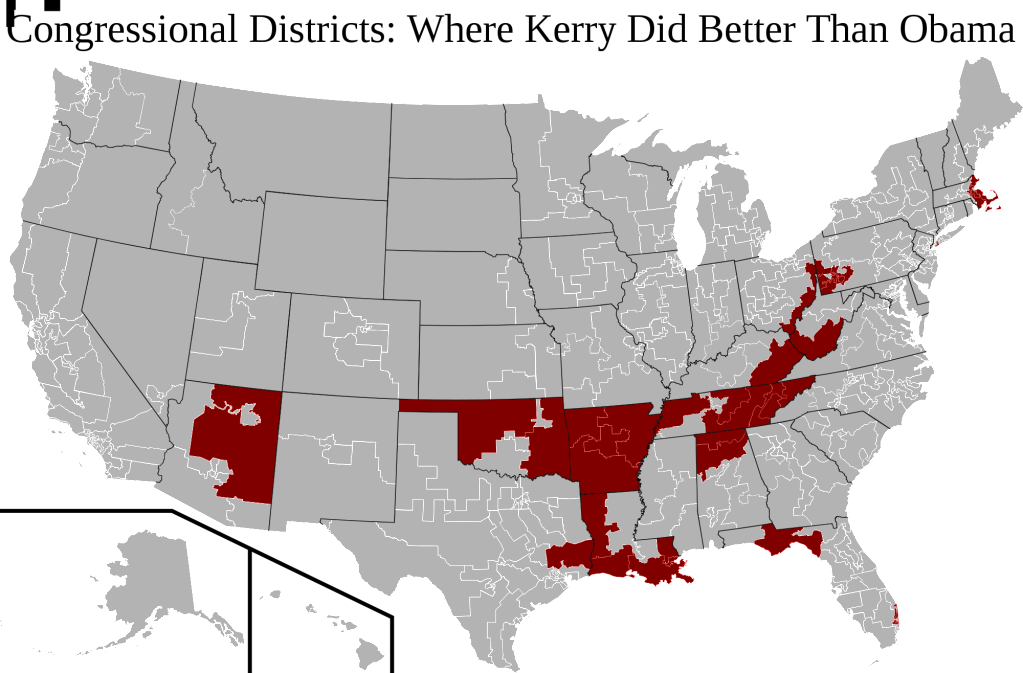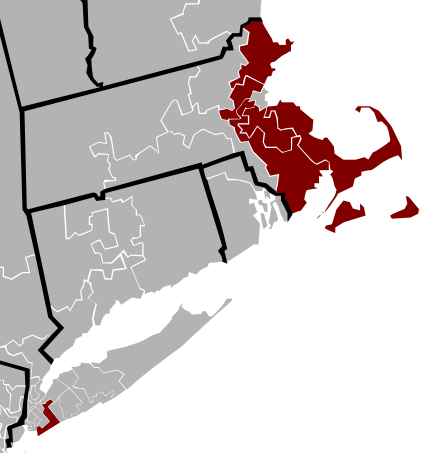This is the first part of three posts analyzing the congressional districts President Barack Obama underperformed in.
Congressional Districts
By most accounts, Senator Barack Obama dominated the 2008 presidential election. He won an electoral landslide, winning Republican-leaning states such as Indiana and North Carolina which his campaign targeted. Compared to 2004, the nation shifted almost ten points more Democratic.
Mr. Obama improved from Senator John Kerry’s performance almost everywhere. More than 90% of congressional districts voted more Democratic than in 2004. Yet this means that at least several dozen congressional districts were more friendly to Mr. Kerry than the Illinois Senator. I have mapped these districts below:
More below.
(Click here for a much better view of the map).
There is a clear pattern here: Republican-shifting congressional districts are found along a diagonal line stretching from Louisiana and Oklahoma to southeastern Pennsylvania, roughly along the Appalachian mountains. This is not exactly startling news; ever since the primaries, Mr. Obama’s weakness in these regions has been well-noted. The five states that shifted Republican from 2004 – Arkansas, Louisiana, Oklahoma, Tennessee, and West Virginia – are all located here.
The exceptions to this pattern, however, constitute items of considerable interest. Some of these have fairly simple explanations. Arizona’s 1st district voted more Republican, for instance, mainly because Arizona was Senator John McCain’s home state.
Other districts, however, go against commonly-held political wisdom. Take LA-2: a black-majority, inner-city district located in New Orleans (represented, ironically, by Republican congressman Joseph Cao). While LA-2 strongly supported Mr. Obama, black depopulation in the aftermath of Katrina made this support less than that in 2004.
Another example can be found in the northeast:
Republicans do better in five Massachusetts districts and one New York district.
This movement stands in contrast to the narrative of Democratic dominance in the northeast. Most in the beltway have ignored this trend, or dismissed it as simply the loss of Mr. Kerry’s home-state advantage. Whether this is true or not, there is quite a lot of interesting stuff to be said on these districts. The next post will be devoted solely to exploring this pattern.
–Inoljt


5 comments